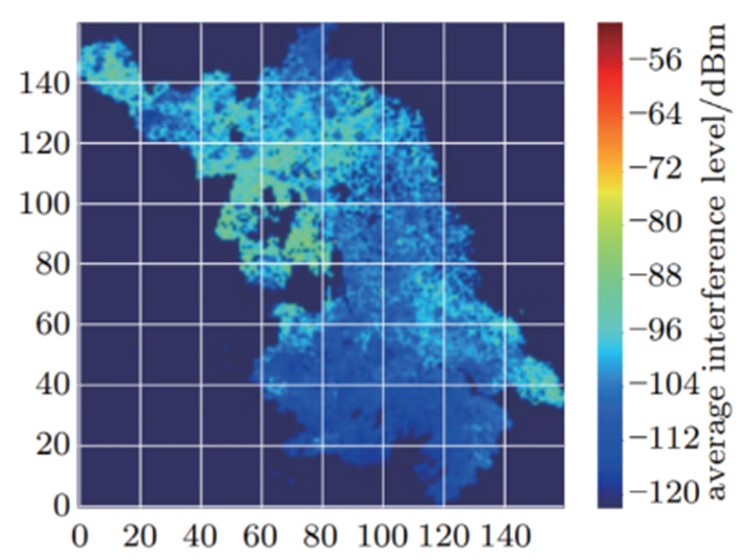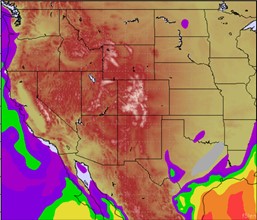How the weather can cause interference for mobile networks
In 1943, the United States Army built Kagnew Station in Eritrea, Africa. Disguised as a telephone relay station and equipped with satellite dishes and antenna farms, its true purpose was to serve as a listening post during the Cold War. The listening post received signals from southern Russia – some 2,000 miles away. Under certain atmospheric conditions, RF broadcasts and transmissions can propagate far beyond their intended range.
Ham radio enthusiasts have long been familiar with this phenomenon. The National Association for Amateur Radio tracks long-distance communication records, as shown in the table below.
Frequency / Distance Record
903 MHz / 4095 km
1296 MHz / 4150 km
2304 MHz / 4024 km
3456 MHz / 4024 km
5760 MHz / 3982 km
Tropospheric ducting also causes interference in modern mobile networks. In both FDD and TDD systems, a remote cell site many miles away can cause interference for local subscribers. In both cases, the transmit signal from the distant cell site can propagate to end up as co-channel interference to degrade the receive signals of both TDD and FDD networks. The range can be up to 1,000 miles depending on geographic location and atmospheric conditions. The impact on mobile networks in the U.S. is generally limited to a range of 200 miles. Signals from TV towers and other interference sources may also propagate over the duct.
When tropospheric ducting occurs, interference from such events tends to last only a few hours but may be severe and recur daily throughout a season. As cell densification continues and aggregate RF energy radiated increases, more sites will be degraded and ducting may become a more frequent occurrence. This is a condition that will not go away over time.
In a research study from the Journal of Communications and Information Networks, which aggregates data from 244,375 antennas, interference occurring from tropospheric ducting was quantified, mapped, and analyzed. By analyzing the direction of the antennas, specific tropospheric ducts between areas could be identified and measured. In most cases, the level of interference power measured was more than enough to degrade the performance of the mobile network.

How Does Tropospheric Ducting Work?
The duct that channels and carries RF signals potentially hundreds of miles is in essence an RF waveguide. In the optical world, this is similar to the way light propagates in a fiber optic cable. A duct is created naturally when temperature inversion occurs generally over large bodies of water or over wide-open spaces. Cool damp air is denser than warm dry air, and hence has a higher index of refraction. Normally the air is warmer near the ground and cooler as the altitude increases. When temperature inversion occurs the cool air becomes trapped under the warm air, and the boundary between the two layers of air reflects signals when their angle of incidence is in the appropriate range. This causes the air to act as a fiber optic cable, or RF waveguide.

Tropospheric Interference Is Predictable But Cannot Be Eliminated
Because ducting is a natural phenomenon dependent on temperature and humidity, weather forecasts can help predict its likelihood and severity. In fact, specific forecasts for ducting are available, with several that are maintained by ham radio enthusiasts such as the example shown below.

Mobile operators can use this information to help diagnose situations where network performance is routinely degraded without explanation. Checking weather maps can help either qualify or rule out tropospheric ducting as a potential source of high levels of interference. While using this information will not solve the problem or restore network performance, it will arm the network operator with information needed to implement a plan to permanently address the interference.
Managing the Impact of Tropospheric Ducting Interference
Mobile network operators can predict and plan for interference from tropospheric ducting. While tropospheric events will typically occur at predictable schedules, it is weather-dependent and hence can occur at any time occur. As long as seasons change, the number of wireless cell sites increase, and more spectrum is put to use, interference from tropospheric ducting will occur and degrade network performance.
Remote Electrical Tilt (RET) can be used to increase the antenna downtilt as a first line of defense against interference, but this may have limited effect based on the interference power. It may also create a loss of coverage that may not be acceptable.
If ample spare capacity is available, traffic can be routed to frequency bands that are not impacted by the interference. However, with network traffic continuing to grow, unused spectrum and excess capacity are typically not available.
Digital cancellation or filtering offers another option. Using digital technology to automatically detect higher levels of interference, diagnose the condition, and then apply signal processing to digitally filter out the interference can maintain network performance during tropospheric ducting events.
We at ISCO are the mobile network interference experts available to support your efforts to understand and diagnose your conditions and then propose possible solutions to improve your network performance.